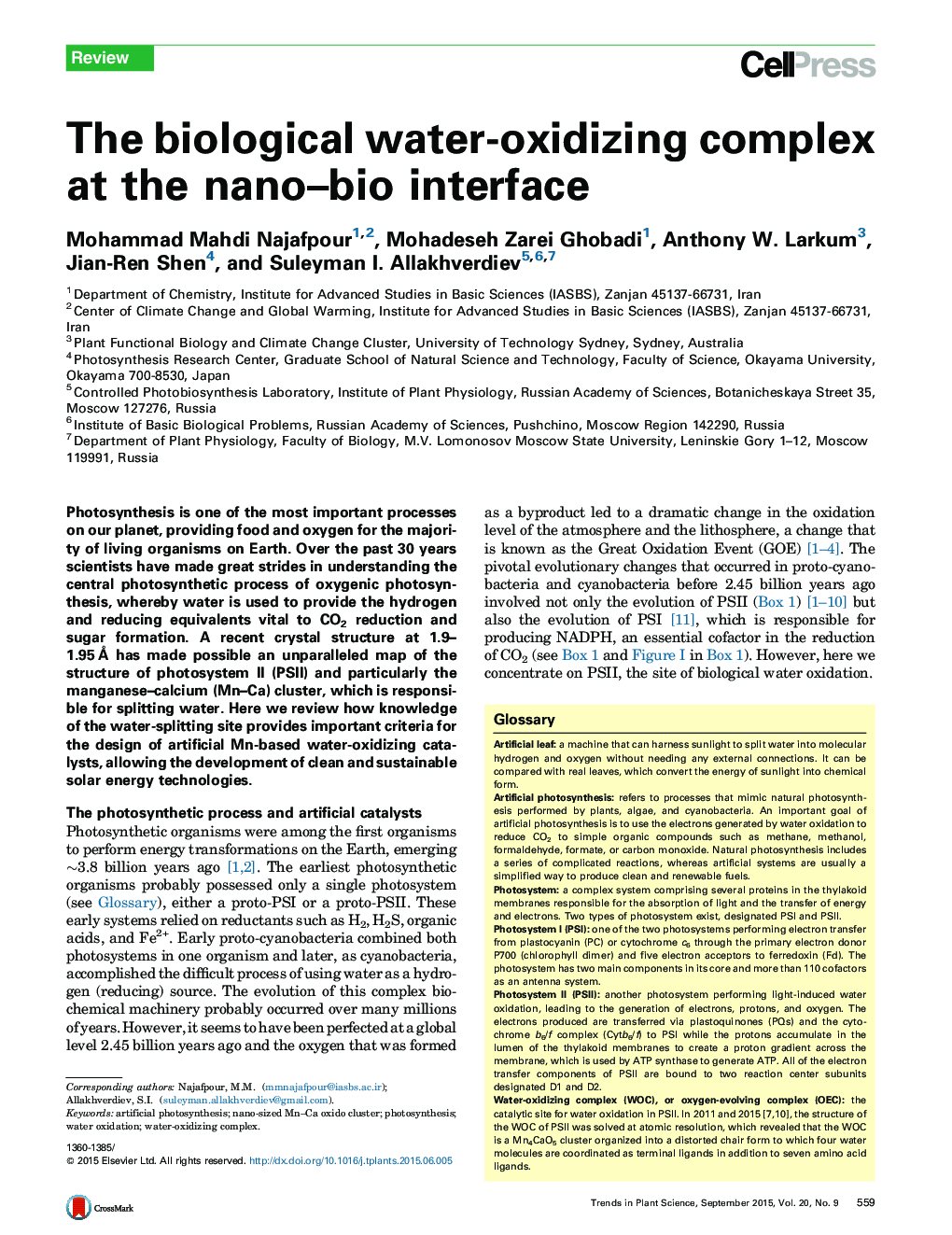| Article ID | Journal | Published Year | Pages | File Type |
|---|---|---|---|---|
| 2825862 | Trends in Plant Science | 2015 | 10 Pages |
•We review the WOC in its natural setting in plants.•We compare biological and artificial Mn-based water-oxidizing catalysts.•A promising way to design artificial models for water-oxidizing catalysts is inspired by nature.
Photosynthesis is one of the most important processes on our planet, providing food and oxygen for the majority of living organisms on Earth. Over the past 30 years scientists have made great strides in understanding the central photosynthetic process of oxygenic photosynthesis, whereby water is used to provide the hydrogen and reducing equivalents vital to CO2 reduction and sugar formation. A recent crystal structure at 1.9–1.95 Å has made possible an unparalleled map of the structure of photosystem II (PSII) and particularly the manganese–calcium (Mn–Ca) cluster, which is responsible for splitting water. Here we review how knowledge of the water-splitting site provides important criteria for the design of artificial Mn-based water-oxidizing catalysts, allowing the development of clean and sustainable solar energy technologies.
